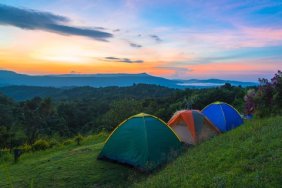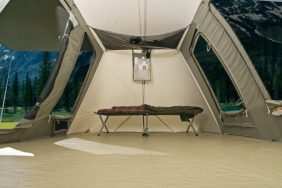 Newcomers to the outdoors may be a little confused with all the foreign terms and concepts they’re faced with when shopping for gear. This is to be expected, of course, with any foray into new territory, not just camping, and it quickly becomes second nature and even one’s native tongue after a bit of time. One major piece of gear that still causes some confusion is tents. Today we’ll take a look at some of the more specific terms associated with tents, in order to help newcomers to camping get a leg up.
Newcomers to the outdoors may be a little confused with all the foreign terms and concepts they’re faced with when shopping for gear. This is to be expected, of course, with any foray into new territory, not just camping, and it quickly becomes second nature and even one’s native tongue after a bit of time. One major piece of gear that still causes some confusion is tents. Today we’ll take a look at some of the more specific terms associated with tents, in order to help newcomers to camping get a leg up.
Dome
This is in reference to the free-standing tent designs that are common nowadays that use flexible, segmented poles to comprise their shape. Dome tents typically have rounded, dome-shaped canopies, which enables them to withstand heavier winds. Dome tents also offer more interior space than older tent types.
Freestanding
Freestanding describes tents that don’t need ropes or stakes for support, like dome tents.
Three-Season/Four-Season
Tents are rated for the seasonal conditions they’re built to endure. Three-season models are designed for Spring, Summer, and Fall, and tend to be the most popular style. They’re also lightweight and built to withstand windy and rainy conditions, but not snow. That’s where you’ll want a four-season tent, which is designed to withstand year-round conditions with the help of additional poles that strengthen the tent’s walls. Four-season tents also have less mesh, which allows them to retain more warmth.
Guy Points
These are reinforced loops that are stitched to the outside of a tent’s wall or rainfly and allow you to attach guy lines.
Guy Lines
Guy lines are strong, adjustable cords that help anchor the tent to the ground and keep the canopy or rainfly taut. They keep the tent from sagging, add wind resistance, and keep it from collecting rain and snow.
Packed Size
This is the size of your tent when it’s folded and stored inside a stuff sack. It’s usually measured in inches and listed as diameter by length.
Peak Height
This is a measurement of the head room you’ll have in the center of a tent.
Vestibule
A vestibule is the covered area outside of the main body of a tent that can be used for storage. Vestibules are where you’ll want to store backpacks and other items when you’re not using them, in order to prevent taking up room inside the tent.








